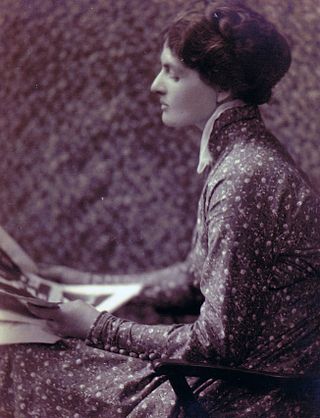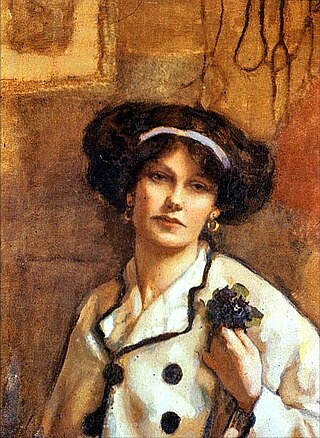Related Research Articles

The Falklands War was a ten-week undeclared war between Argentina and the United Kingdom in 1982 over two British dependent territories in the South Atlantic: the Falkland Islands and its territorial dependency, South Georgia and the South Sandwich Islands. The conflict began on 2 April, when Argentina invaded and occupied the Falkland Islands, followed by the invasion of South Georgia the next day. On 5 April, the British government dispatched a naval task force to engage the Argentine Navy and Air Force before making an amphibious assault on the islands. The conflict lasted 74 days and ended with an Argentine surrender on 14 June, returning the islands to British control. In total, 649 Argentine military personnel, 255 British military personnel, and three Falkland Islanders were killed during the hostilities.

Imperial War Museums (IWM) is a national museum with branches at five locations in England, three of which are in London. Founded as the Imperial War Museum in 1917, the museum was intended to record the civil and military war effort and sacrifice of the United Kingdom and its Empire during the First World War. The museum's remit has since expanded to include all conflicts in which British or Commonwealth forces have been involved since 1914. As of 2012, the museum aims "to provide for, and to encourage, the study and understanding of the history of modern war and 'wartime experience'."

SS Canberra was an ocean liner, which later operated on cruises, in the P&O fleet from 1961 to 1997. She was built at the Harland and Wolff shipyard in Belfast, Northern Ireland at a cost of £17 million. The ship was named on 17 March 1958, after the federal capital of Australia, Canberra. She was launched on 16 March 1960, sponsored by Dame Pattie Menzies, wife of the then Prime Minister of Australia, Robert Menzies. She entered service in May 1961, and made her maiden voyage starting in June. In the 1982 Falklands War she served as a troopship. In 1997 the singer and songwriter Gerard Kenny released the single "Farewell Canberra" which was specially composed for the last voyage.

A war artist is an artist either commissioned by a government or publication, or self-motivated, to document first-hand experience of war in any form of illustrative or depictive record. War artists explore the visual and sensory dimensions of war, often absent in written histories or other accounts of warfare.
These are some of the key weapons of the Falklands War used by both sides.
Air Chief Marshal Sir Peter Ted Squire, was a senior Royal Air Force officer. He was a fast jet pilot in the 1970s, a squadron commander during the Falklands War, and a senior air commander in the 1990s. Squire served as Chief of the Air Staff from 2000 to 2003. In retirement he was the chairman of the board of trustees of the Imperial War Museum and vice-chairman of the board of the Commonwealth War Graves Commission.

Anna Airy was an English oil painter, pastel artist and etcher. She was one of the first women officially commissioned as a war artist and was recognised as one of the leading women artists of her generation.
The cultural impact of the Falklands War spanned several media in both Britain and Argentina. A number of films and television productions emerged from the conflict. The first Argentine film about the war was Los chicos de la guerra in 1984. The BBC drama Tumbledown (1988) tells the story of a British officer paralysed from a bullet wound. The computer game Harrier Attack (1983) and the naval strategy game Strike Fleet (1987) are two examples of Falklands-related games. A number of fictional works were set during the Falklands War, including in Stephen King's novella The Langoliers (1990), in which the character Nick Hopewell is a Falklands veteran. The war provided a wealth of material for non-fiction writers; in the United Kingdom (UK) an important account became Max Hastings and Simon Jenkins' The Battle for the Falklands.

The last stage of the Falklands War was the surrender of the Argentine Governor at Port Stanley.

Ethel Léontine Gabain, later Ethel Copley, was a French-Scottish artist. Gabain was a renowned painter and lithographer and among the founding members of the Senefelder Club. While she was known for her oil portraits of actresses, Gabain was one of the few artists of her time able to live on the sale of her lithographs. She also did etchings, dry-points, as well as some posters.

Norah Neilson Gray was a Scottish artist of the Glasgow School. She first exhibited at the Royal Academy while still a student and then showed works regularly at the Paris Salon and with the Royal Academy of Scotland. She was a member of The Glasgow Girls whose paintings were exhibited in Kirkcudbright in July and August 2010.
British official war artists were a select group of artists who were employed on contract, or commissioned to produce specific works during the First World War, the Second World War and select military actions in the post-war period. Official war artists have been appointed by governments for information or propaganda purposes and to record events on the battlefield; but there are many other types of war artist.
Frauke Eigen is a German photographer, photojournalist and artist.

Charles Pears was a British painter, illustrator and artist. His work was part of the art competitions at the 1928 Summer Olympics and the 1932 Summer Olympics.

Sonia Lawson RA RWS RWA is an English contemporary artist born in North Yorkshire.
The War Artists' Advisory Committee (WAAC), was a British government agency established within the Ministry of Information at the outbreak of the Second World War in 1939 and headed by Sir Kenneth Clark. Its aim was to compile a comprehensive artistic record of Britain throughout the war. This was achieved both by appointing official war artists, on full-time or temporary contracts and by acquiring artworks from other artists. When the committee was dissolved in December 1945 its collection consisted of 5,570 works of art produced by over four hundred artists. This collection was then distributed to museums and institutions in Britain and around the world, with over half of the collection, some 3,000 works, going to the Imperial War Museum.
The Ven. Guy Mayfield was Archdeacon of Hastings from 1956 to 1975.
Dorothy Josephine Coke was an English artist notable for her work as a war artist on the British home front during the Second World War. Coke was also an art teacher and as an artist was known for her watercolours, which have a very free, open-air quality to them.
Kathleen Saywell Allen (1906–1983) was a British painter, muralist, designer and art teacher. Allen is known for her urban landscapes and, in particular, scenes depicting post-war rebuilding in London.
Junella was a fishing trawler, best known for her service with the Royal Navy during the Falklands War. She was built in 1975 for J Marr & Son, a Hull-based fishing company. On 11 April 1982 she was taken up from trade by the British government and commissioned into the Royal Navy. She was fitted with Second World War era minesweeping gear at Rosyth Dockyard, manned by Royal Navy sailors and allocated to the 11th Mine Countermeasures Squadron. She sailed on 26 April but was unable to commence sweeping until after the 14 June Argentine surrender. In the meantime she was utilised to transfer troops and stores between ships and landed special forces troops at San Carlos. Demining operations commenced on 21 June. Junella returned to the United Kingdom on 11 August, carrying a defused Argentine mine.
References
- 1 2 "Women at war: The female British artists who were written out of history" . The Independent . 8 April 2011. Archived from the original on 14 June 2022.
- ↑ "Birthdays", The Guardian , p. 35, 17 February 2014
- ↑ Kitson, Linda; Beazley, Mitchell (1982). The Falklands War: A Visual Diary.
- 1 2 Imperial War Museum. "Press desk: Women War Artists". archive.iwm.org.uk. Archived from the original on 7 March 2014. Retrieved 4 April 2013.
- ↑ "War Art and Artists: Official War Artists: British: Linda Kitson: The Falklands, 1982". University of the West of England - Vortex.
- ↑ "Linda Kitson, Official War Artist". Imperial War Museum.
- ↑ "Women War Artists - Artist profile: Linda Kitson". Imperial War Museum. Archived from the original on 18 June 2011.
- ↑ Imperial War Museum. "Falklands War 1982, Linda Kitson's artistic record". archive.iwm.org.uk. Archived from the original on 17 March 2015. Retrieved 4 April 2013.